"Forty-kapyatka" 45-mm anti-tank gun model 1937 of the year (53-K)
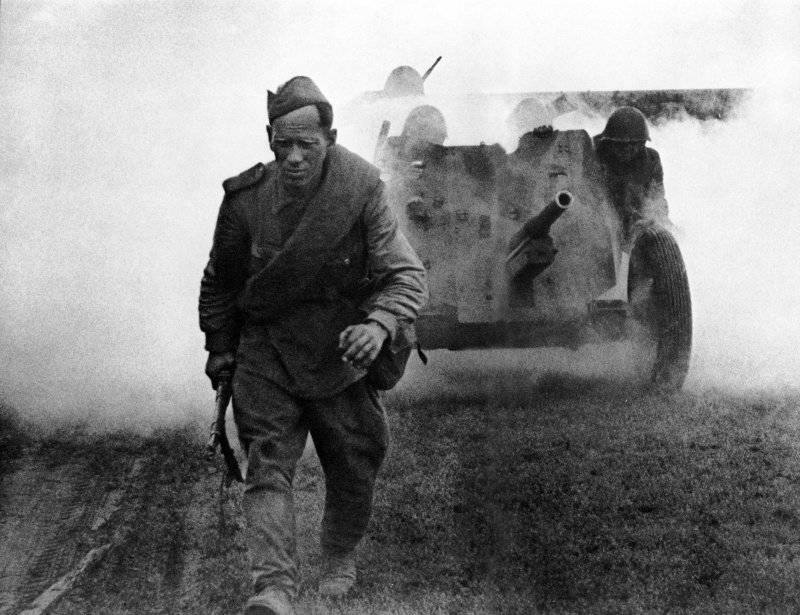
In the year 1932 on the gun carriage of this gun imposed barrel caliber 45 millimeters. The gun thus obtained became the basis for creating an anti-tank gun of the 1937 model of the year. The wedge gate of this gun, unlike all previous samples, was equipped with a semiautomatic mechanism. In addition, the ballistic characteristics were improved, and the suspension of the wheel travel was also introduced.
A prototype 45-millimeter PTP produced at the factory number 8, where she was assigned a factory index 53-K. After conducting factory tests, he was sent to the Scientific Artillery Test Site. During the tests, which took place from August to September 1937, 897 shots were carried out, of which 184 was from concrete. The system was also tested on a haul for 684 kilometers. The 45-mm gun test passed. The suspension spring crashed during the ride.
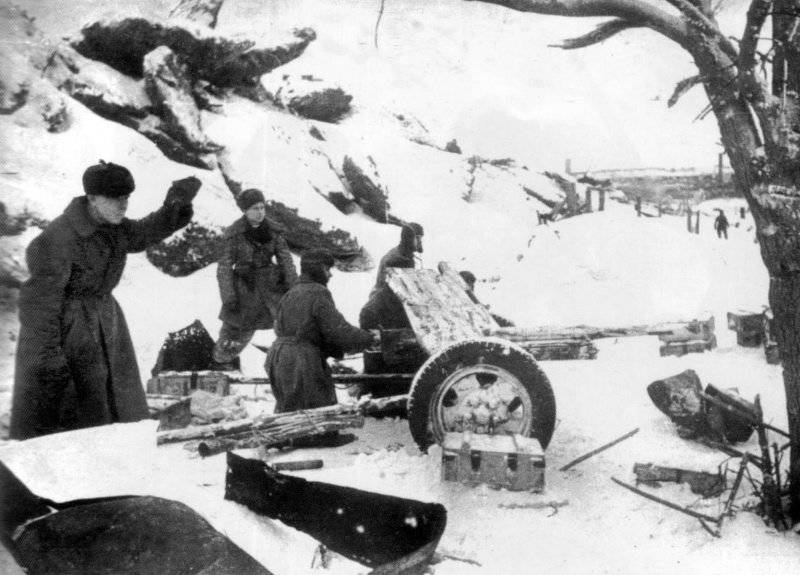
In November 1937, the plant No. 8 produced an experimental series (6 units) 45-mm guns, which differed from the standard guns of the 1932 model of the year:
1. Semiautomatic shutter, which worked when using armor-piercing and fragmentation shells, while the gun model 1932, the year only when using armor-piercing. This was achieved through the forced charging of semi-automatic springs during the shot;
2. Special push-button descent. The button was located in the center of the handwheel;
3. Suspension of a crank-spring type, which was first implemented in the USSR in this system;
4. The PTP wooden wheels of the 1932 model of the year were replaced with GAZ automobile wheels from the State Customs Committee. ZIK-1 wheels were converted from the wheels of the GAZ car with slight changes in the spokes;
5. The upper machine was a riveted-welded structure made of sheet steel, while in the PTS of model 1932, the upper machine was made by casting;
6) The turning mechanism has been changed;
7) Lower machine - welded.
Of the six experimental guns, all but No. 5 were intended for military tests, and sample No. 5 was intended for the needs of the plant. In the period from December 1937 - to January 1938, these guns at the landfill of plant number 8 passed factory tests.
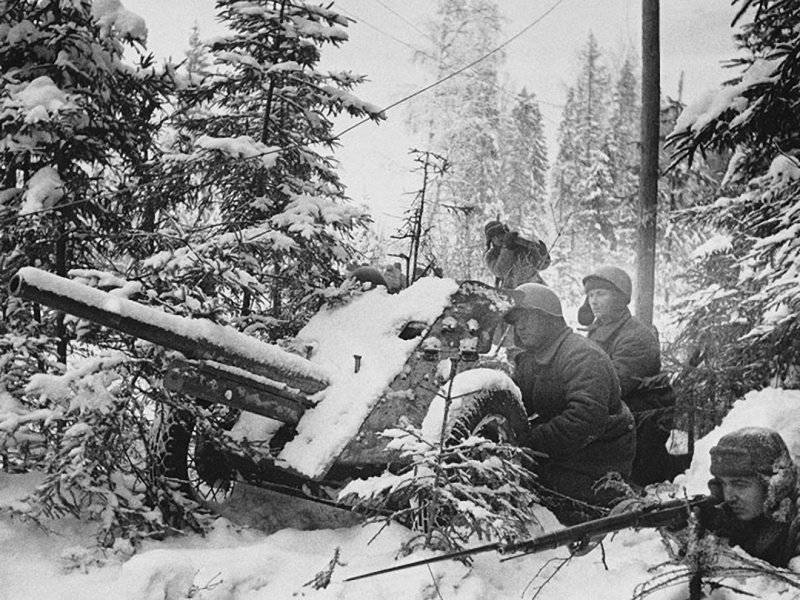
22 in January, the cannon No. 3 (barrel No. 0734), equipped with the I-3 chuck, was sent to the Scientific Test Artillery Ground, where it arrived on January 28. During factory tests, 605 shots were fired from it. The staff of the NIAP after the delivery of the gun dismantled it, and then collected with errors, resulting in some parts were rendered unusable.
During the ground tests at the Scientific Artillery Test Site, 1208 shots were fired, of which 419 fragmentation and 798 armor-piercing shells. The rate of fire when using the manual descent for both guns (sample 1932 of the year and sample 1937 of the year) is the same with fire without correcting crosstalk. When using a button release, the rate of fire of the 1937 sample gun of the year was 13% higher when firing an armor-piercing projectile and 6% when firing fragmentation. During the shooting, there were 16 semiautomatic failures, of which 13 for armor-piercing projectiles and 3 for fragmentation ones. Some failures occurred due to poor-quality liners. After the 281 th shot, the screw of the inertia body of the semiautomatic device failed. The work of semi-automatics was generally recognized as satisfactory.
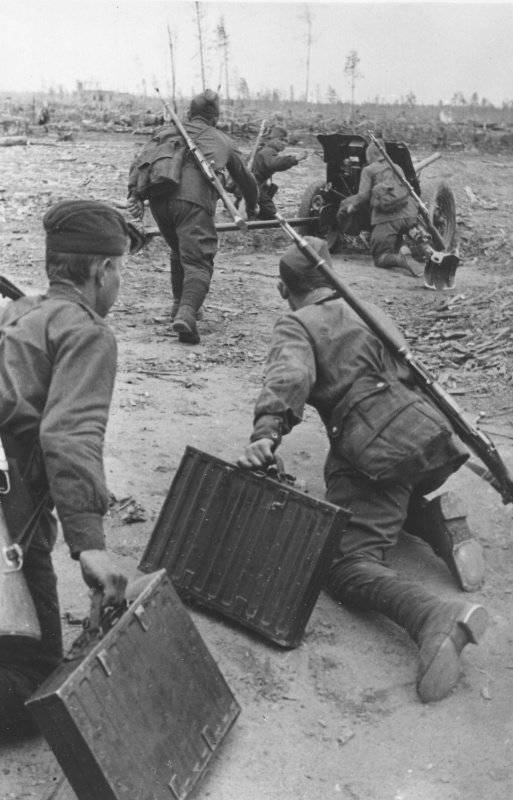
During the ground tests, the gun passed 2074 km, while the speed of wrecking over rough terrain (without a front end) ranged from 15 to 30 km / h, on cobblestone - from 30 to 35 km / h, and along the highway about 60 km / h. The haulage system was stable.
At the beginning of the 38 year, troop tests of three 45-mm 53-K guns (No. 1, 2 and 4) with front I-3 were conducted. In the tests participated 6 tractor "Komsomolets". During military tests, on average, 450 shots were fired at each barrel, while semi-automatics showed trouble-free performance. In these tests produced mileage Moscow - Kharkov - Krasnodar. Once fixed minor flaws, you could start gross production. 24.04.1938, the 53-K gun was adopted under the name 45-millimeter anti-tank gun model 1937 of the year. 06.06.1938 was launched mass production.
The design of the gun consisted of two main parts: the gun carriage and the barrel with a bolt. The bound trunk consisted of a monoblock pipe and a screwed breech. The vertical wedge bolt ensures reliable locking of the bore during firing and provides extraction (ejection) of the spent cartridge after opening. The mechanism of semiautomatic provides a high rate of fire guns - 15-20 shots. Gun carriage is optimal for its purpose - anti-tank gun. The mast includes: a cradle with wheel chocks, an upper movable machine with guidance mechanisms, a lower stationary machine with sliding beds, a sprung motion, a shield cover and aiming devices. Sliding bed provides a horizontal angle of fire to 60 °. A sprung motion using automobile-type wheels makes it possible to transport an instrument using mechanical traction at speeds up to 50 kilometers per hour. When translating the weapon into a firing position, in which the beds are moved all the way to the side, the cushioning mechanism is turned off, and the wheels and the lower machine are rigidly connected through the combat axis, thereby ensuring the stability of the cannon during the shot, as well as the cushioning safety. After transferring the gun to the stowed position (the beds are reduced), the cushioning turns on automatically.
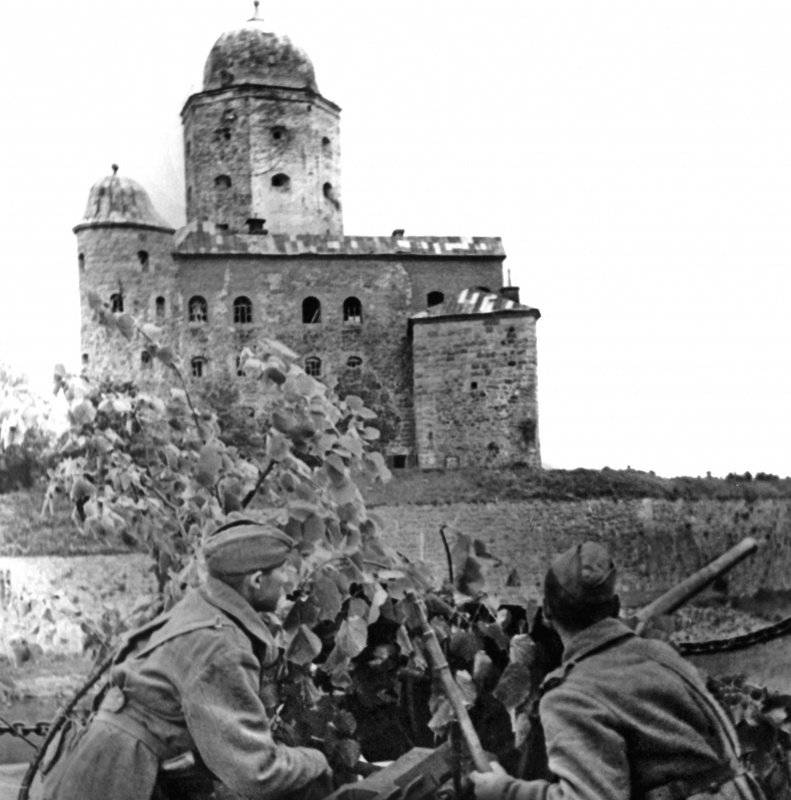
The compact design of the weapon (length 402 cm) and low shield cover (height 120 cm) ensure its inconspicuousness on the battlefield. To facilitate masking shield shield gun made folding. The gun was mainly used to destroy armored targets and enemy firing points with direct fire at 1000-1500 m. When firing at long distances, the observation of firing results was hampered by a projectile rupture cloud (small in size).
A set of ammunition consisted of unitary cartridges with armor-piercing, sub-caliber and armor-piercing-tracer shells, fragmentation grenades, as well as unitary cartridges with buckshot. Armor-piercing tracer and armor-piercing shells were used to destroy tanks, armored vehicles, as well as for firing at the embrasures of firing structures. When meeting at right angles at a range of 500 meters, they pierced 43 mm armor, and at a distance of 1 km - 32 mm. With a caliber projectile at a range of 500 meters, when meeting at a right angle, armor 66 mm thick was pierced, and at 100 meters - a distance of dagger fire - 88 mm. In the first year of the war, these indicators were quite enough to destroy all types of Wehrmacht tanks.
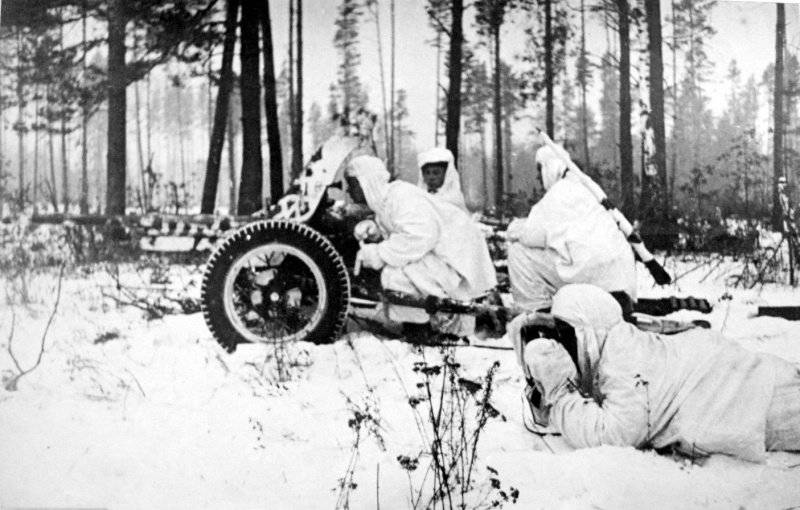
Frag grenade used for the destruction of manpower and openly located firing points. A grenade at break on the surface of the ground gives about 100 damaging elements (fragments) that can defeat on the area up to 7 meters deep and up to 15 meters along the front. Cartridges with grapeshot used to repel infantry attacks on the position of the gun. Range of use to 400 meters. The canister consists of bullets that were placed in a sleeve in a special shell. When firing a bullet from the barrel, they fly out at a certain angle, hitting the enemy forces on the front - up to 60 meters, in depth - up to 400 meters.
In the pre-war years, in addition to these projectiles, smoke and armor-piercing chemical projectiles were produced. The latter were intended to poison the garrisons of the pillboxes and tank crews. The mass of the armor-piercing chemical projectile was 1,43 kg, it contained 16 grams of potent toxic substances.
The production of 45-mm PTP, rolled up before the war, was restored in an exceptionally short time at several enterprises at the same time. One of the enterprises, which was merged with the Kiev plant "Arsenal", evacuated to the east, by the end of 41 had already given the 1,3 front thousands of 45-mm guns of the 1937 model of the year. In the 42 year, the production of these guns was replaced by the production of modernized 45-mm guns of the model 1942 of the year. In total, 42 43-mm PTP model 37354 of the year was manufactured during 45-1937.
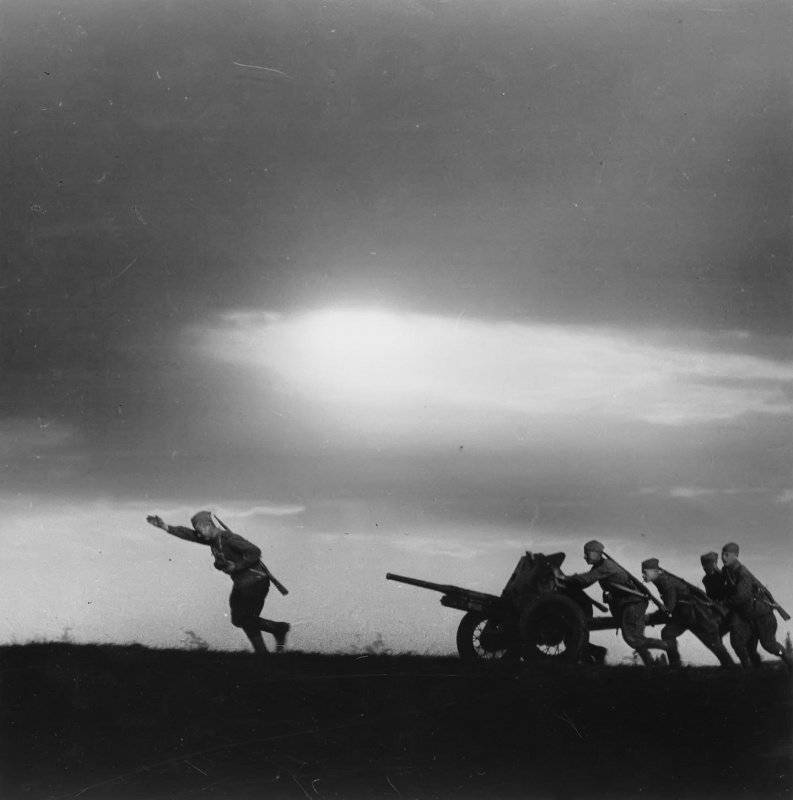
The 45 mm guns of the 1937 model of the year were armed with anti-tank divisions of rifle divisions (12 guns) and anti-tank platoons of rifle battalions (2 guns). The same guns armed individual anti-tank regiments, which consisted of 4-5 batteries (for 16-20 guns). In the development of anti-tank artillery a landmark was the order of the People's Commissar of Defense against 01.07.1942 of the year. In accordance with this order, anti-tank artillery was renamed fighter-anti-tank. The officer corps, which was part of the PTA, was taken on a special account and appointed only in them. After being treated in hospitals, wounded sergeants and soldiers were to return to PTA units. For the personnel, the following were introduced: increased monetary support, payment of a bonus to the calculation of a weapon for each enemy tank wrecked, a distinctive sleeve insignia. Of course, all this contributed to increasing the effectiveness of anti-tank artillery.
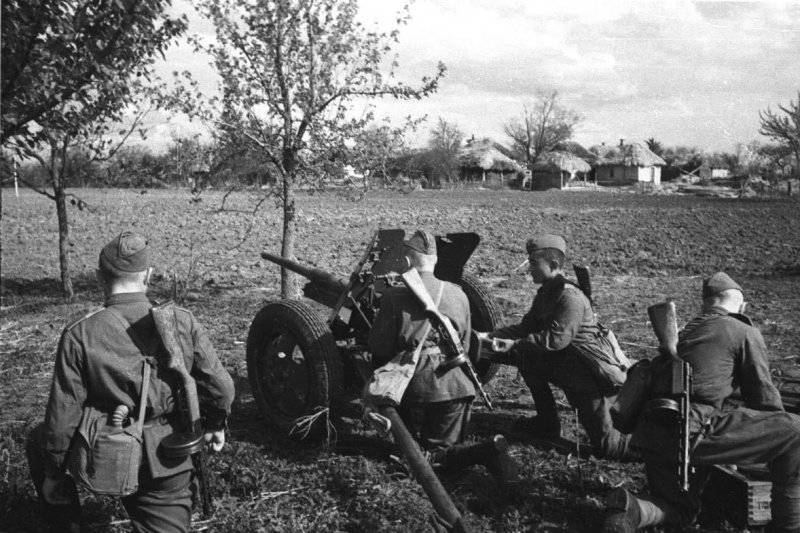
Here is an excerpt from the document of the “Main Artillery Directorate of the Red Army”, which describes the purpose of the 45-K 53-mm PTP: “The 45-mm 1937 anti-tank anti-tank gun of the year is a powerful anti-tank weapon of cavalry and rifle units of the Red Army, which is able to successfully fight off the Red Army, which is able to successfully fight off the Red Army’s cavalry and rifle units of the Red Army, which can successfully fight off the Red Army. tanks of any type.
In addition to the main purpose (destruction of tanks), the gun, which is armed with a canister and fragmentation projectile, can successfully destroy enemy firing points located behind light shelters, infantry and cavalry operating in open areas.
The gun, being in the arsenal of rifle units, must accompany the infantry during all periods of the battle, relentlessly follow it, shooting the enemy firing points with direct fire.
The main fighting qualities of 45-mm PTP are:
a) Maneuverability and mobility;
b) rate of fire;
c) armor penetration;
d) Flatness of the trajectory.
The gun can be transported by mechanical pitch (car or tractor “Komsomolets”), as well as horse pitch. The front and carriage moves of the gun are reliably sprung, which makes it possible to allow speed when moving by mechanical pitch: on tarmac road - 50 — 60 km / h, on dirt roads of good quality - 40-45 km / h, on cobbled bridge - 30-35 km / h…
... To make full use of the fighting qualities of the 45-millimeter anti-tank gun, you need the correct formulation of the fire mission, careful use of the gun to the terrain, and flexible maneuvering during combat.
Fast execution of the assigned fire tasks is ensured thanks to the reliable operation of the gun. To ensure trouble-free operation, excellent training is required for calculating an instrument, strictly coordinated work, the interchangeability of its numbers during loss, and excellent knowledge of the mat. parts of the gun, as well as timely replenishment of ammunition.
For firing from an 45 millimeter PTP model 1937 of the year, unitary cartridges are used as for the 45 millimeter PTP model 1932 of the year. "
Performance characteristics of the 45 millimeter cannon model 1937 of the year:
Caliber - 45 mm;
Weight in the fighting position - 560 kg;
Weight in the stowed position: 1200 kg;
The initial velocity of the projectile - 760 m / s;
The angle of vertical alignment is from -8 ° to 25 °;
The angle of horizontal guidance - 60 °;
Rate of Fire - 15-20 shots per minute;
Maximum firing range - 4400 m;
The maximum direct shot range - 850 m;
Penetration of the norms - 28-40 mm (at distances 500 and 1000 m);
Weight of armor-piercing projectile - 1430
Information